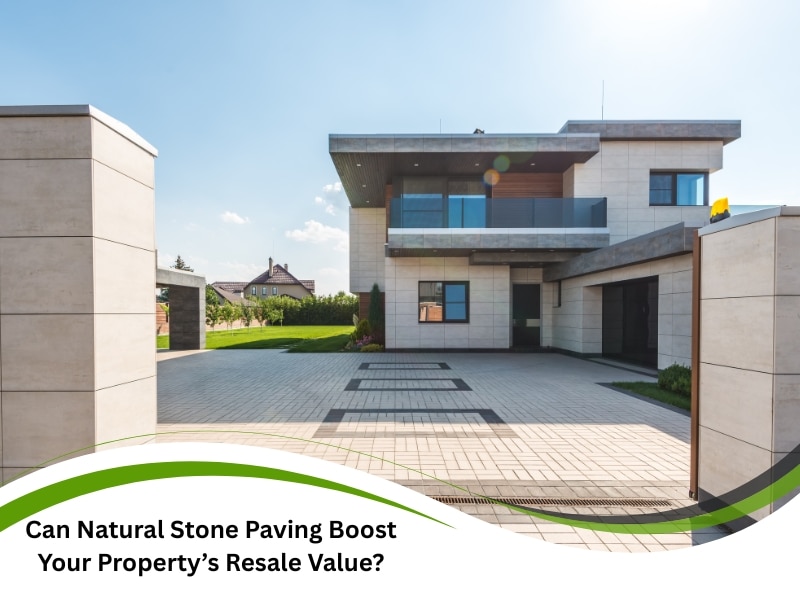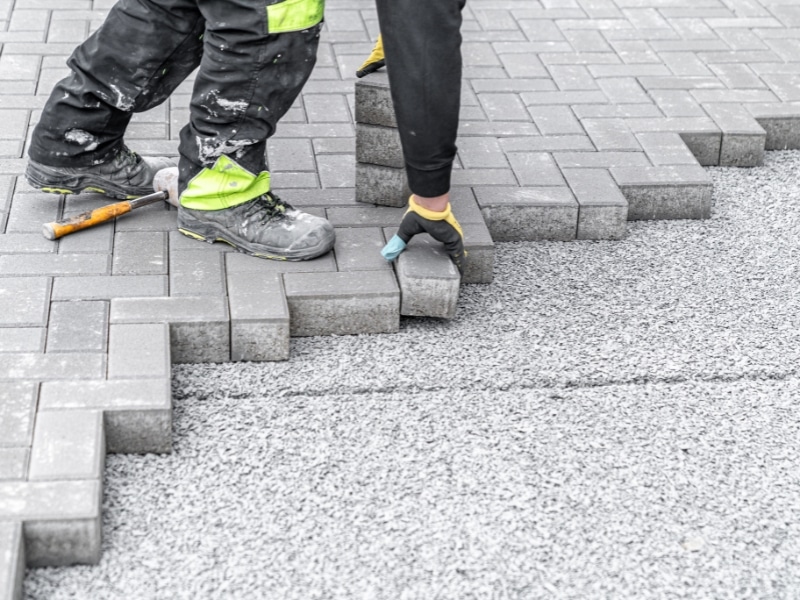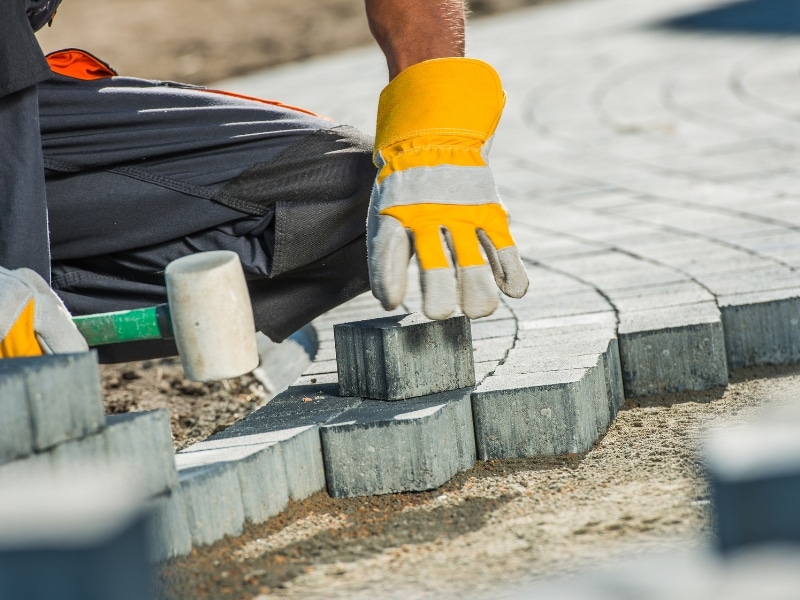Is your outdoor space doing your property justice? When it comes time to sell, a tired or mismatched patio might cost you more than you think. In contrast, natural stone paving provides a high-impact upgrade that turns heads and adds genuine long-term value. It’s not just about style—buyers look for low-maintenance, weather-resistant finishes that feel polished. Unlike synthetic options, natural stone offers strength and timeless beauty. Its design versatility endures the elements. This article breaks down exactly how natural stone paving improves function, increases appeal, and makes your home more market-ready.
What issues can arise with synthetic paving options?
Even with upfront savings, synthetic pavers often disappoint once exposed to real-world conditions. Here are the most common issues you may encounter:
- UV fading over time: Colours can break down fast, especially under the intense Sydney sun.
- Warping in heat: Some materials soften or buckle, creating trip hazards or uneven walkways.
- Chemical runoff: Low-grade synthetics may leach compounds, damaging surrounding soil or plant life.
- Whole-panel replacement: Isolated damage can mean replacing entire segments, increasing long-term costs.
- Uneven wear patterns: Footpaths and high-traffic zones fade faster than edges, creating an inconsistent appearance.
If you’ve dealt with these before, you know they can turn your outdoor retreat into a money pit. A more reliable alternative is found in landscaping options to transform your home garden, which include natural materials that retain their appearance and value across seasons.
What costs or complications come with low-grade paving?
Going cheap with paving materials often backfires. Here are the problems most homeowners encounter within a few short years:
- Cracking under basic use: Budget tiles often lack density, making them prone to breaking under light loads.
- Poor jointing leads to weed growth: Gaps form and allow nature to take over—fast.
- Premature wear and erosion: Thin, porous pavers degrade under rain and foot traffic.
- Drainage failure: Inferior materials combined with poor installation can result in water pooling.
- Repetitive patchwork: Constant fixes lead to a messier, inconsistent finish over time.
Over time, maintenance accumulates, and you spend more time trying to fix avoidable damage. Investing in more durable solutions from the start saves money and keeps your landscape looking sharp. With thoughtful planning, you can dodge repeat repairs and deliver a finished space that works year-round.
Why might neglecting drainage cause paving damage?
Drainage plays a crucial role in determining your paving’s longevity. Without it, even top-quality surfaces will degrade. Here are the key risks poor drainage introduces:
- Sub-base erosion: Waterlogged bases lose strength, causing shifts and dips.
- Cracking from freeze-thaw: Damp tiles crack when moisture expands in changing temperatures.
- Algae and slip risks: Pooled water breeds slick growth—dangerous and unsightly.
- Hidden rot: Water trapped below surfaces can affect nearby timber, soil, or walls.
- Pest attraction: Constant moisture may attract insects or termites to surrounding structures.
The domino effect is real—inadequate drainage leads to poor paving. And in the context of regulatory changes, understanding the engineered stone ban and its implications highlights the importance of material safety and suitability, especially where water exposure is involved.
How does natural stone paving solve drainage and durability concerns?
Natural stone isn’t just attractive—it’s built to last and engineered by nature to handle water and wear. Here are the standout advantages:
- Porous properties: Allows gradual absorption, helping prevent surface pooling.
- Strong under pressure: Travertine and other stones resist cracking, even under frequent foot traffic.
- Efficient runoff: With a proper gradient, water flows smoothly off the surface.
- Movement tolerance: Natural joints shift slightly, absorbing ground changes.
- Consistent lifespan: Pavers age uniformly, preserving the appearance over the years.
Here’s how it compares:
Feature | Natural Stone Benefits | Synthetic Paving Weakness |
Drainage | Excellent water control | Traps water, causes mould |
Durability | Withstands wear for decades | Cracks under normal use |
Heat Tolerance | Stable in sun and variable temps | Warps and fades in heat |
Appearance | Natural variation adds character | Uniform, prone to fading |
Choosing quality natural stone paving for outdoor areas offers long-term protection and adds visual weight to your property—whether for entertaining or boosting resale potential.
What design options are available with natural stone paving?
Design flexibility is a significant reason natural stone paving continues to grow in popularity. Here are the ways it allows customisation for all sorts of outdoor spaces:
- Finish choices: Polished, tumbled, or honed—each offers a unique texture and safety underfoot.
- Natural colour ranges: From ivory and beige to darker tones, stone complements any garden palette.
- Layout freedom: Use rectangular tiles, large pavers, or freeform cobblestones to match your design vibe.
- Border integration: Blend paving with garden beds or water features seamlessly for a unified look.
- Multi-use zoning: Define dining, play, and garden areas with different paver shapes for more precise flow.
The adaptability is unmatched. These paving solutions for maximising small outdoor areas prove especially useful in tight or irregular spaces, where size and material flexibility can transform your layout options.
How can homeowners overcome standard travertine paving problems?
While travertine performs well, a little care goes a long way. These solutions tackle common challenges and keep your paving in top nick:
- Uneven settling: Ensure proper subgrade compaction and use flexible sand joints.
- Slip risk in wet zones: Opt for a tumbled finish that adds grip even when damp.
- Stains from organic matter: Seal tiles to repel mulch or leaf tannins, and clean spills quickly.
- Moss and mould build-up: Maintain surface hygiene and reapply sealer every few years.
- Discolouration risks: Avoid harsh cleaners and stick to pH-balanced solutions for longevity.
Addressing these from the start will keep your paving safe, appealing, and built to last—no surprises or emergency fixes needed.
Final thoughts on increasing value through natural stone paving
Enhancing outdoor areas with natural stone isn’t purely aesthetic—it’s a wise investment that boosts property value. Stone paving resolves common issues with inferior materials, supports proper drainage, and allows stunning, custom designs that speak to buyers. Whether prepping for sale or future-proofing your outdoor setup, natural materials win on every front. See how A1 Gardening & Landscaping Sydney delivers lasting curb appeal through thoughtful recommendations and practical surface solutions that hold up beautifully in Sydney’s diverse climate.



